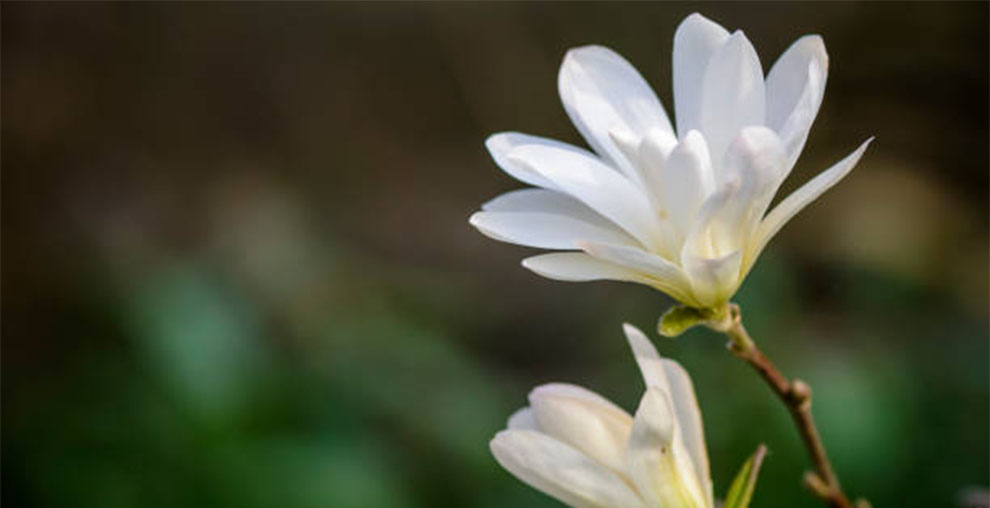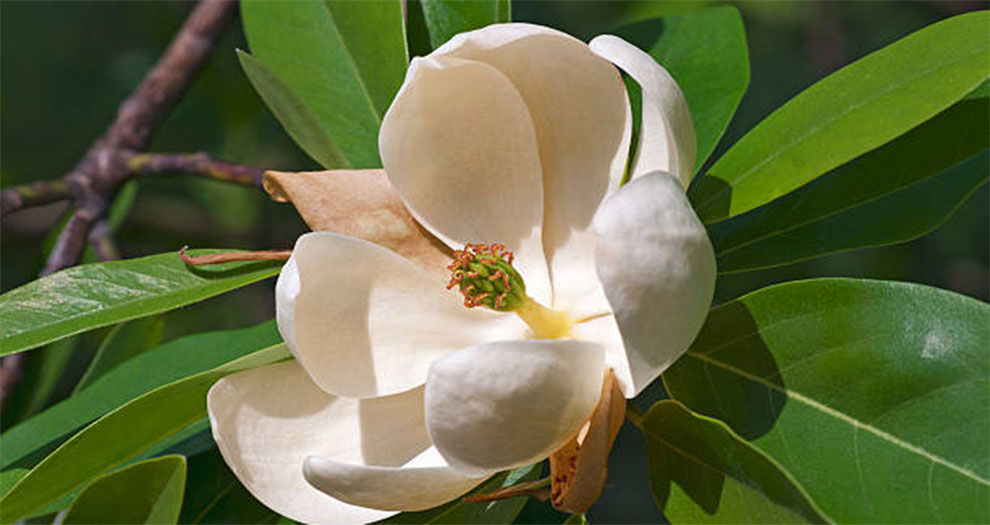Magnolia Tree Growth Rate – How Fast or Slow Is It?

Magnolia trees have a slow to a moderate growth rate of 1-2 feet per year in ideal growing conditions
Magnolia trees are known for their several beautiful varieties that grow showy blooms. So, if you want to grow clusters of stunning flowers in your garden, just go for varied magnolia tree varieties.
Magnolias are long-lived trees that are slow to moderate growers. It can flourish well when provided with decent conditions. That said, you will be able to enjoy its sweetly perfumed flowers in your yard only when you take good care of it.
Are you curious to learn how fast do magnolia trees grow? These trees have a slow to moderate growth rate. The maturity rate, though, varies based on the type of magnolia species you pick for your garden.
After doing some good research, we’ve come up with this informative blog about the maturity height, and size of different magnolia trees. It will also guide you to create a magnolia tranquil landscape.
Are Magnolias Fast or Slow Growing: Magnolia Tree Growth Rate?

Most magnolia trees grow at a slow to medium rate. On average, their growth rate is about 1 to 2 feet every year. Of course, it may fluctuate depending on the kind of magnolia tree you plant in your home landscape.
Some magnolia cultivars like southern magnolia are also known as fast-growing. You can expect it to sprout more than 24 inches in a year.
Once magnolia trees reach their full height, they stop growing. On reaching the stage of maturity the height of these trees usually lies between 60-80 feet. This means if you are planning to plant these beauties in your garden or backyard, make sure to give them enough space for growing.
Remember the environmental conditions in which the plant is placed also determine the magnolia growth rate. But these stunning trees thrive best in well-drained, moist and slightly acidic soil.
In addition to this, it is most fertile when grown in regions with full sunlight. If you don’t provide them with adequate sunlight or water, it will have a bad impact on the growth and overall health of the tree.
Magnolia Trees Species Growth Rate and Sizes
A member of Magnoliaceae family, magnolia is an exquisite tree planted by many gardeners, homeowners as well as estate managers.
So, if you are thinking to have this captivating tree in your home landscape, first check out different magnolia species.
Of course, the growth rate and mature size of these pretty blooming trees is different based on various cultivars. But with the right magnolia care, these trees can thrive well, even for a decade or more.
Let’s take a glance at the various different varieties of magnolia trees and how fast do magnolia trees grow.
1. Anise Magnolia

| Mature Height | 30-50 feet high |
| Mature Spread | 30-50 feet wide |
| Growth Rate | Moderate (growing 1-2 feet per year) |
Anise is a pretty and easy-growing variety of magnolia trees. It features beautiful and perfumed flowers in shades of white. In areas with warm climates, the best time to plant these species is late fall. While in regions with cold climates, you can grow these trees in the early spring months under proper conditions.
2. Alexandrina Magnolia
| Mature Height | 20-30 feet high |
| Mature Spread | 30 feet wide |
| Growth Rate | Moderate (growing 1–2 feet per year) |
This is a pretty eye-catching variety of magnolia trees. You might know it for the lovely white and pink-purple flowers in the shape of a goblet.
During fall season it also features yellow foliage, which will add extra appeal to your garden. This medium-sized tree is perfect to grow in any compact garden or yard.
3. Ashe’s Magnolia

| Mature Height | 15-25 feet high |
| Mature Spread | 25 feet wide |
| Growth Rate | Moderate to Fast |
Ashe’s magnolia also popular as Magnolia Ashei can be a perfect pick for your yard or garden. The stunning tree follows a moderate to fast growth rate.
It possesses really attractive white (purple at the center) flowers along with striking leaves. The most unique thing about Ashe tree is that the leaves are sensitive to sunlight, i.e., it expands in lower sunlight and contract in full sunlight.
4. Bigleaf Magnolia

| Mature Height | 40 feet high |
| Mature Spread | 40 feet wide |
| Growth Rate | Moderate |
This is another amazing stunner in the group of magnolia species. It can be a beautiful addition to your home landscape when grown under optimal conditions.
The tree grows in a pyramidal shape featuring large leaves which are light-green on the upper-side and silver undersides. The tree also shows off impressive white flowers.
5. Centennial Star Magnolia

| Mature Height | 15-20 feet high |
| Mature Spread | 10-20 feet wide |
| Growth Rate | Moderate to Fast |
These majestic trees are known to produce creamy-white blooms in spring season. The most enticing feature of their spectacular flowers is their soft pink petals that are lightly perfumed.
In summer months, the tree features attractive cone-shaped, green-red seed pods (2 to 3 inches).
6. Kobus Magnolia

| Mature Height | 50 feet high |
| Mature Spread | 35 feet wide |
| Growth Rate | Slow (growing 1 foot per year) |
Magnolia Kobus is a slow-growing tree that features lovely blossoms as spring season commences. You might notice these small deciduous trees blooming white flowers with a sweet fragrance and dark-green leaves.
In the autumn season, their long obovate leaves will leave you mesmerized with yellow-brown color. Another remarkable feature is their captivating pyramidal shape which turns to round as it begins spreading branches over time
7. Lily Magnolia

| Mature Height | 12 feet high |
| Mature Spread | 8-12 feet wide |
| Growth Rate | Slow (growing 1 foot per year) |
Lily magnolia is highly popular among the smaller varieties of magnolia trees. You can use this deciduous tree as a specimen plant as well as a hedge plant.
It is popularly used to add an ornamental charm because of lily shaped purple and pink shaded flowers. It usually takes time to get fully mature, about 10 to 15 years.
8. Little Gem Magnolia

| Mature Height | 15-20 feet high |
| Mature Spread | 7-10 feet wide |
| Little gen magnolia tree growth rate | Slow |
It is one of the famous magnolia species that blooms at a younger age in comparison to other magnolias. With an upright growing structure this tree features evergreen elliptical-shaped dark green leaves.
It heavily blooms white flowers from mid-spring through summer months. For this reason, this beauty is commonly used to decorate patios, decks, gardens and yards.
9. Saucer Magnolia

| Mature Height | 20-30 feet high |
| Mature Spread | 25 feet wide |
| Growth Rate | Moderate (growing 1-2 feet per year) |
It is a small magnolia tree with low-branching structure and saucer-like flowers. This broad-leafed tree is embellished by white blossoms tinged with light to dark pink and pinkish purple hue.
It loves to grow in moist and acidic soil with full sunlight exposure. In winters, make sure to protect it from cold and harsh winds during its initial growth period.
10. Southern Magnolia

| Mature Height | 80 feet high |
| Mature Spread | 40 feet wide |
| Growth Rate | Slow to moderate (growing less than 1-2 feet high per year) |
Also known as Magnolia Grandiflora, it is a stunning evergreen tree grown in late spring or early fall season. The tree can take about 10 years to reach the size of maturity. It is widely used as a decorative garden tree for its big, perfumed white flowers and glossy green leaves. This tree is hardy to the zones 6-10.
11. Star Magnolia

| Mature Height | 20 feet high |
| Mature Spread | 10-15 feet wide |
| Growth Rate | Moderate to fast (growing 1-2 feet per year) |
The Star Magnolia can be easily grown as a foundation plant or specimen plant. With perfumed white flowers, lustrous dark leaves and gray bark this tree will appear strikingly beautiful in your garden.
It produces healthy flowers in full sun exposure. Plus, it is easily adaptable to rich, acidic, loamy, clay and moist soils.
12. Sweetbay Magnolia

| Mature Height | 10-35 feet high |
| Mature Spread | 10-20 feet wide |
| Growth Rate | Moderate to fast (growing 1-2 feet per year) |
The sweetbay magnolia or swamp magnolia can grow as a deciduous or evergreen tree. Native to North America has glossy dark green leaves with creamy white flowers.
The beautiful flowers lightly smell like lemon and perfectly go well as a patio plant or specimen plant. You can often witness its stunning flowers in early summer and late spring season.
Related: Do magnolia trees lose their leaves in winter?|Evergreen magnolia types
How Can I Speed Up The Growth of My Magnolia Tree?
The majestic magnolia trees can thrive for many years from 80-120 years. However, these trees are quite particular about the conditions in which they are grown.
So, when planting any variety of magnolia, take care to provide all suitable factors to improve magnolia tree lifespan.
Let’s take a look at some common factors that can speed up your magnolia growth rate.
- Water – Magnolia trees need deep watering in order to establish a deep healthy root structure. However, you don’t need to water it frequently otherwise it will cause root rotting. Ideally, it is best to water your magnolia plant at least one time in a week.
- Soil – These trees prefer to grow in well-drained soils which are rich in acid content. So, if you want to provide nutrient-rich soil to your plant, take care to maintain its pH level between 5 to 6.
- Location – Magnolia trees require enough space to establish their roots. So, take care to plant it in a spacious area otherwise it can hinder the growth of other plants in your garden. Likewise, make sure to place your tree in area receiving full sunlight to light shade.
- Fertilizer – In order to see your magnolia trees grow healthy, use high quality fertilizer rich in potassium. It should be best applied in every month during summer.
FAQs
Q. Where is the best place to plant magnolias?
Ans. As we know, the requirements for magnolia trees vary depending on the different varieties. Most magnolia species can peacefully grow in hardiness zones between 4 and 10. Also, make sure to plant your magnolia tree in neutral to acidic soil and full sun to see it flourishing for many years.
Q. Which is the fastest growing magnolia?
Ans. The growth rate of southern magnolia is remarkably fast. In fact, many people adore this specie for its fast growing nature. It can grow about 2 feet every year when planted in ideal growing conditions.
Q. How fast do magnolias grow from a seed?
Ans. Magnolia seeds take time to sprout, develop into young plants and establish roots. So, if you are thinking about their growth rate, you’ll need to show a lot of patience. It can take as many as 15 years to fully blossom.
To Sum Up…
If you want to landscape your garden or yard, you can definitely find a number of privacy hedging options. However, magnolia tree can be your best bet because of its stunning appearance and majestic flowers.
Before you select any magnolia species, consider preparing a favorable environment for its quick growth. For this, you should take care to explore all factors like water, location, sunlight and more, that impact magnolia tree growth rate.
